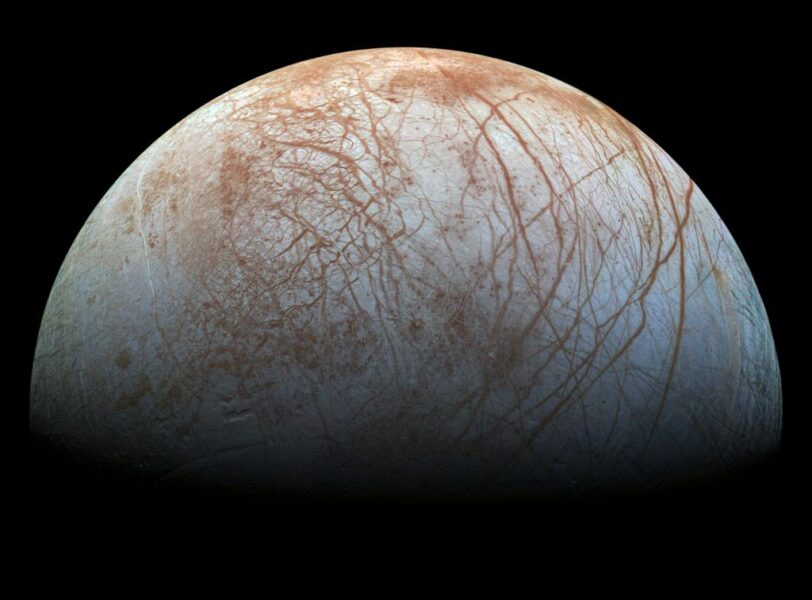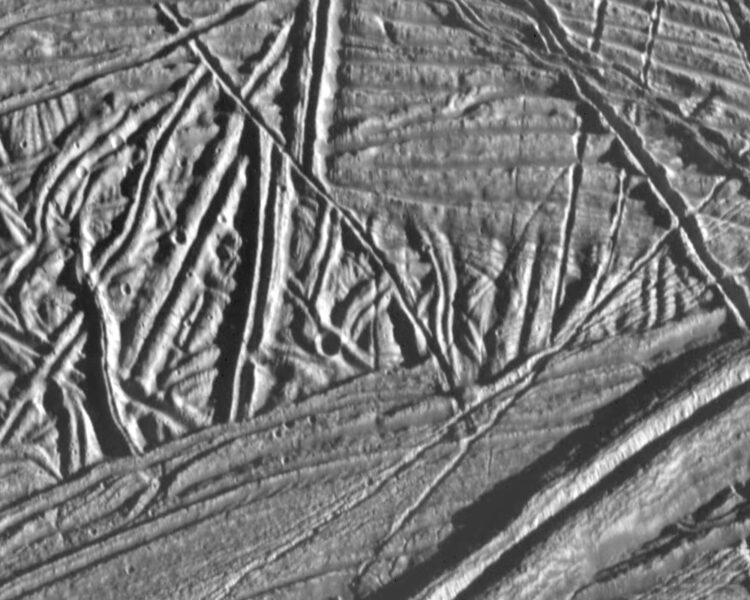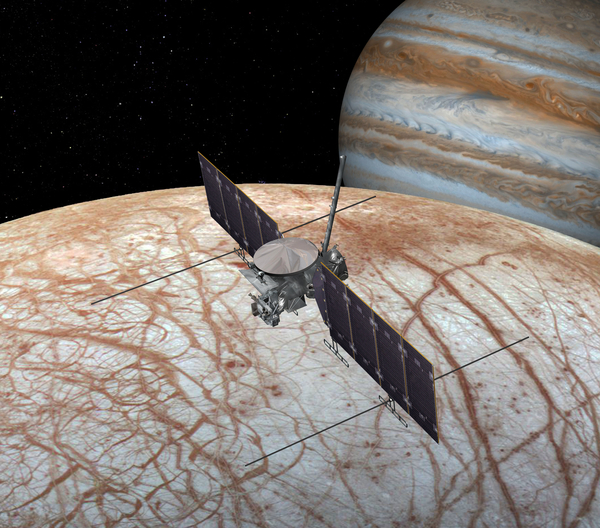Radar measurements of ice on Earth suggest that Jupiter’s moon Europa might host water near its surface.

NASA / JPL-Caltech / SETI Institute
Astronomers may have just taken a big step towards figuring out whether Jupiter's moon Europa is habitable. New radar measurements of Greenland's ice sheets here on Earth, and their similarity to features on the icy moon, suggest there could be water close to Europa's surface, something that would make for a more life-friendly environment. The results appear in Nature Communications.
Europa has long been atop the solar system's habitability hit list. The gravitational might of Jupiter stretches and squeezes the satellite, which is almost as big as our own Moon. The resulting tidal heating is enough to sustain a vast ocean of liquid water beneath Europa's icy crust. There's more water under that ice than all of Earth's oceans, lakes, and rivers combined.
If the icy shell is a thin veneer, it could contain pockets of water that interact with chemicals from space, other moons, and the volcanoes of Io (another of Jupiter's moons). “[Then] life has a shot,” says Dustin Schroeder (Stanford University). The big question has been just how thick that icy crust is.
Schroeder is one of a trio of Stanford researchers who think they have the answer. It's all to do with Europa's mysterious M-shaped double ridges. These peaks in the ice, which are typically 300 meters (1,000 feet) high and 800 meters apart, have remained an enigma since astronomers first spotted them in images taken by the Galileo spacecraft back in the 1990s.

NASA / JPL / ASU
The Stanford team may have just solved the riddle of how they formed thanks to observations made considerably closer to home. “We were working on something totally different related to climate change and its impact on the surface of Greenland,” Schroeder says. The team was trying to understand the Greenland ice in order to improve future sea-level predictions in the face of global warming.
When the team analyzed surface elevation data and ice-penetrating radar, collected in Greenland from 2015 to 2017 by NASA’s Operation IceBridge, they saw similar double ridges to those observed on the icy surface of Europa.
“In Greenland, [the ridges] formed in a place where water from surface lakes and streams frequently drains into the near-surface,” says lead researcher Riley Culberg. The ice then fractures around a pocket of pressurized water as it refreezes inside the ice sheet. “People have been studying these double ridges [on Europa] for over 20 years now, but this is the first time we were actually able to watch something similar on Earth and see nature work out its magic,” says team member Gregor Steinbrügge.
Similar shallow water pockets could form on Europa when water from the subsurface ocean is forced up into the ice shell through fractures. “That would suggest there could be a reasonable amount of exchange happening inside of the ice shell,” Culberg says.

NASA
“The model . . . is very compelling,” says Kevin Hand (Jet Propulsion Laboratory, Caltech), who was not involved in the research. However, it's far from an open-and-shut case. “The biggest question mark for me . . . is whether their mechanism for double ridge formation could work with salty ice,” he says. The Greenland ice sheet is almost pure water formed by countless centuries of snowfall, whereas Europan ice contains high levels of sodium chloride.
We'll need NASA's Europa Clipper spacecraft, due to arrive at Europa in 2030, to find out more. “The Ice Penetrating Radar investigation on Europa Clipper could reveal whether or not this model for double ridge formation does indeed apply to Europa,” Hand says. If so, then, according to Hand, “double ridges on Europa may be enticing regions to explore in our search for signs of life.”
 1
1









Comments
Rod
April 19, 2022 at 12:50 pm
Interesting report with 3x references to *life*. Charles Darwin in 1882 stated about the origin of life, "Though no evidence worth anything has as yet, in my opinion, been advanced in favor of a living being being developed from inorganic matter, yet I cannot avoid believing the possibility of this will be proved some day in accordance with the law of continuity.1", Charles Darwin, “To Daniel Mackintosh 28 February 1882,” Darwin Correspondence Project, letter 13711, http://www.darwinproject.ac.uk/entry-13711.
Is the evidence for life arising on Europa from non-living matter better today than when Darwin wrote in 1882? Darwin used a warm little pond.
You must be logged in to post a comment.
You must be logged in to post a comment.